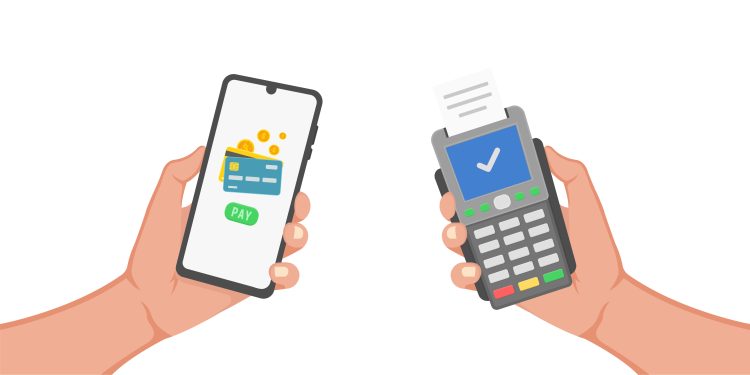The past two decades have shown us how the world can change dramatically in a short amount of time. This is especially true when it comes to financial transactions. Payments used to be dominated by cash and checks, but credit and debit cards quickly took the lead. Digital payments have also come into favor, and a recent survey reported that 74% of its respondents prefer digital payment methods.
The digital world is rapidly expanding too, and now, most transactions require an internet connection. But for areas that lack or have little access to the internet, offline digital payments could be the only option.
What are offline digital payments?
Offline digital payments are non-cash payments that occur without Wi-Fi, mobile data, or hot spots. In India, the Reserve Bank recently released a framework to make these payments possible.
How to use them
The user would initiate a transaction via a prepaid card, e-wallet, or mobile wallet and then verify themselves using a password or PIN. If they are close enough to the payment receiver, a transaction will be made.
One example of this is through devices like smartphones, which have the technology for near-field communication (NFC). It allows for data exchange when devices are within close enough range, and the NFC technology is turned on.
Another way offline cashless payments can be made is through the asynchronous route. A transaction would be initiated, and when an internet or mobile connection resumes, the payment would be processed.
Pros and cons
Every technology will have its pros and cons, and it is important to understand these advantages and drawbacks before investing in new technology.
Benefits
The offline payments technology has made digital transactions more accessible to those in rural areas who lack internet and mobile connection or whose connection is not good enough. Plus, those who don’t have access to a cash ATM can also use these services.
Downed networks are incredibly frustrating for merchants and consumers since they prevent them from conducting business or making purchases. One Japanese credit card company has viewed offline digital payments as a solution for transactions and continued cash flows while networks are down.
The industry is open for evolution, so new and existing businesses can adapt and develop technology to allow for different modes of offline digital payments. New pathways could be built, better security implemented, an increased number of consumers and merchants gain flexibility, and more users could be reached.
It will give rural merchants more payment options to accept. Again, not everyone has access to cash, but they may have digital funds. Being able to accept digital funds allows for more revenue to come into local businesses, and the merchants wouldn’t have to worry about a weak internet connection.
Disadvantages
As previously stated, much of the world is embracing digital and online technologies, and most still require an internet connection to operate. One of these is cryptocurrency which uses a decentralized network to host data and requires an internet connection to perform and confirm its transactions.
The offline payments technology aims to address rural areas, but the people and businesses in these places could be using old devices and cards which do not have the features to run offline digital payments. Without the proper equipment, the change would be unviable.
Another disadvantage to offline digital payments is the cap on the amount that can be exchanged. Only small amounts of money can be transferred using offline digital payments. On one end, this is a security feature that helps protect users, but on the other, it may prevent them from making more expensive purchases. Monthly payments like those for life insurance can be hundreds of dollars which can be more than what is allowed and could cause users to miss crucial payment windows.
Offline digital payments also have lower security. Transactions require digital means, which can become outdated and vulnerable to flaws that would have been addressed with updates. One more security concern around these transactions is that they cannot run two-factor authentication, which could protect users whose credentials have been compromised.
There is a final concern. Payment systems and banks are not obligated to provide or invest in these frameworks, so they may never be established. If this is the case, then users and citizens of the area would be unable to take advantage of this innovative transaction option.
Are offline digital payments necessary?
Offline digital payments may feel frivolous when an internet connection is at your fingertips. However, many parts of the world still do not have reliable links to the world wide web. Even in these areas, the digital world is making its way in, and people must be able to interact and navigate these changes. This payment option is just one way to begin to bridge this gap.
Areas that do not have to fret about no or low-quality connection are still at risk for outages. These disruptions can happen for several reasons, like power outages, cyberattacks, system overloads, and more. In these instances, it can feel like business grinds to a halt. With cash on the decline, sales will be lost if the merchant cannot run transactions. Offline digital payments provide an answer for these situations.
Conclusion
Offline digital payments are one of the many emerging trends for 2022. In fact, Apple recently announced that it will deploy NFC capabilities on iPhones, a key component for offline digital exchanges. That said, the technology is still in its infancy, and there is a lot of room for growth and change to improve these types of transactions.
As the feature evolves, so will its advantages and disadvantages. It is crucial to review the pros and cons periodically to understand how the technology is expanding and its impact on the world. Currently, it presents a solution for downed networks and digital options for areas with a poor-quality internet connection.










